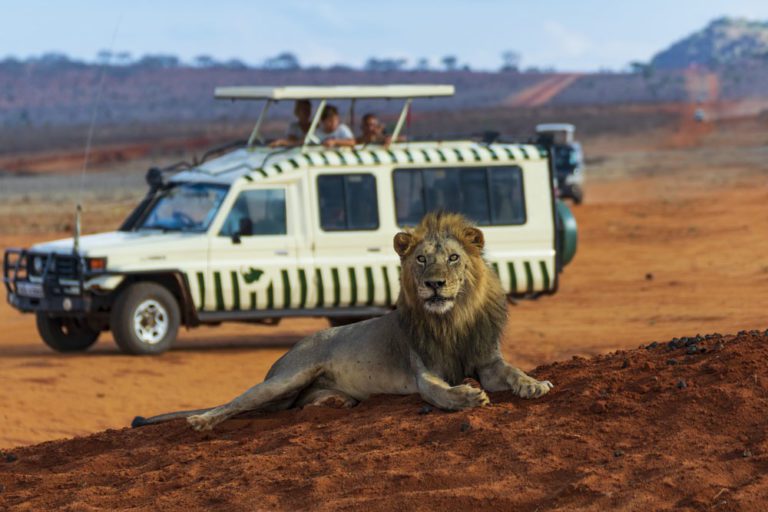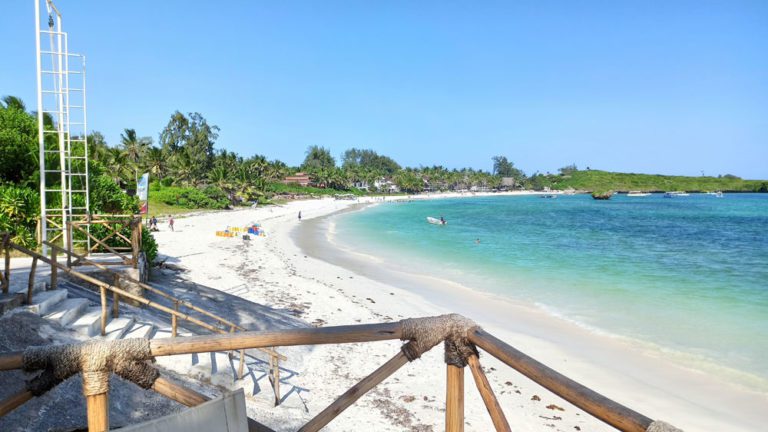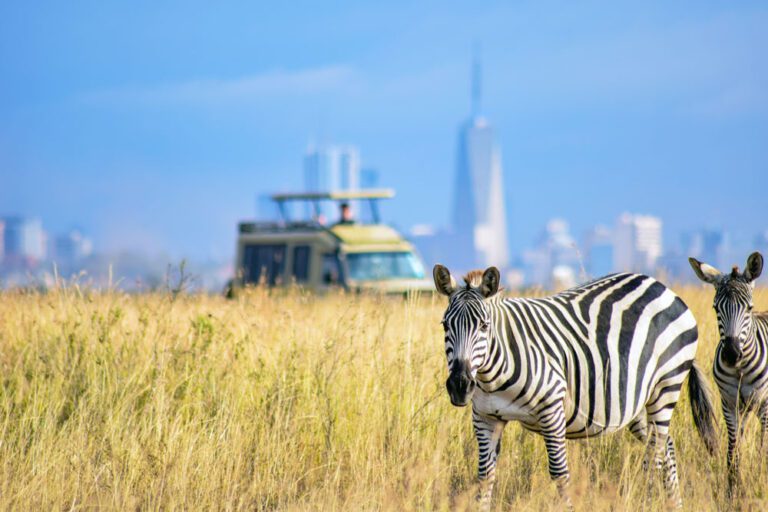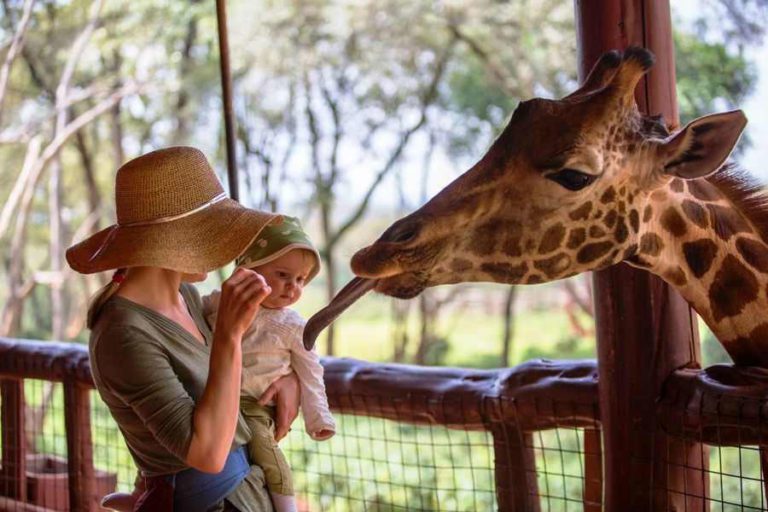The Greatest Show on Earth: Witnessing the Wildebeest Migration in Masai Mara
Last updated on June 24th, 2023 at 01:38 am
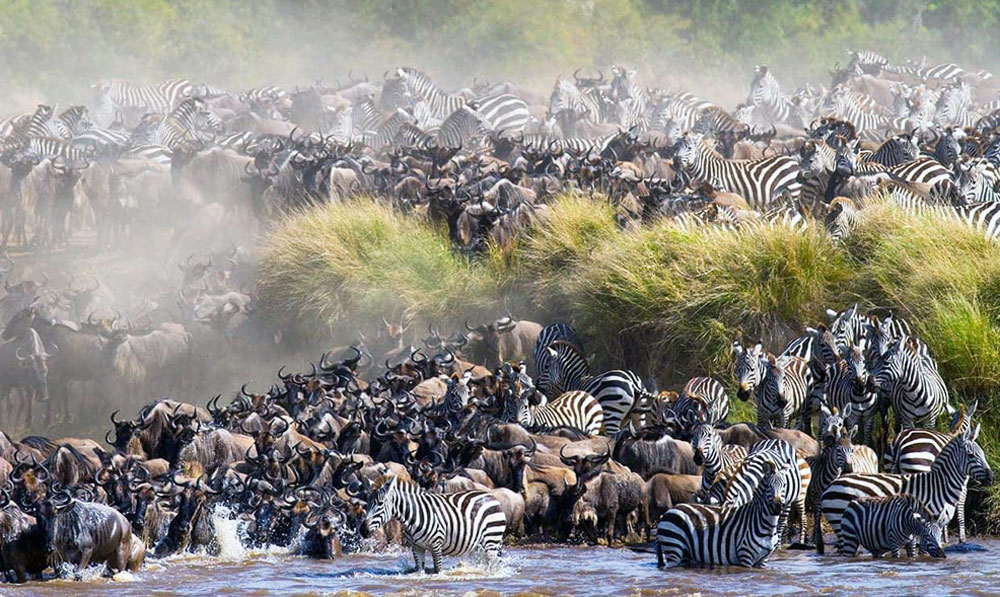
Are you ready to embark on a journey through one of the greatest natural shows on earth – the wildebeest migration in Masai Mara? As you watch thousands of wildebeest, zebras, and gazelles make their way across the grassy plains and crocodile-infested rivers of East Africa, you’ll witness a truly awe-inspiring event.
Imagine the sound of their hooves pounding the ground and the adrenaline-pumping moments as they cross the Mara River – it’s an unforgettable experience that’s sure to leave you breathless. It’s no wonder that the wildebeest migration is considered a bucket-list item for many wildlife enthusiasts and nature lovers.
In this blog post, I’ll take you on a journey through the wildebeest migration in Masai Mara. You’ll learn the basics of the migration, hear my personal experience of witnessing the migration, and get tips for planning your own trip to witness this amazing natural event. So buckle up and get ready to be amazed – this is a journey you won’t want to miss!
An Overview of the Wildebeest Migration
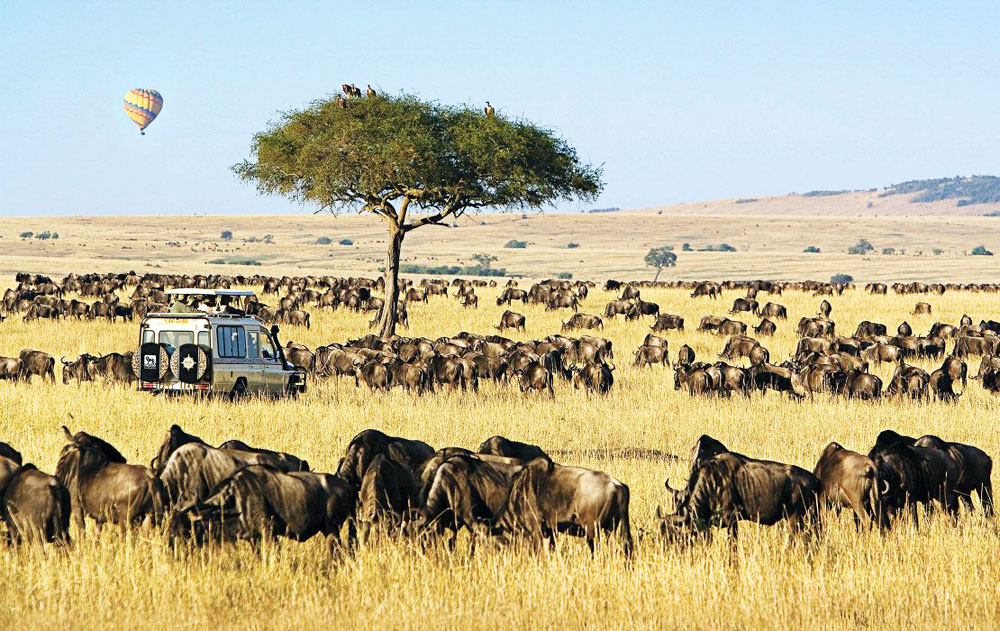
The migration begins in southern Serengeti in Tanzania, where the wildebeest and other animals give birth to their young. As the dry season approaches and the grass dries up, the herds begin their trek north in search of greener pastures. They follow a circular route that takes them across the Mara River and into the Masai Mara reserve in Kenya.
The timing of the migration varies depending on the rainy season which determines when the grass will be most plentiful. Typically, the migration begins in July and lasts until October with the wildebeest making their way back to the southern Serengeti for the birthing season. However, the exact timing can vary from year to year.
During the migration, the animals face a number of challenges and risks. One of the biggest obstacles is the crossing of the Mara River where crocodiles lie in wait for their prey. The herds must also navigate through grasslands and wooded areas facing the threat of predators such as lions, hyenas, and cheetahs. In addition, the herds may encounter human settlements and roads which can disrupt their natural migration patterns.
Despite these challenges, the wildebeest, zebras, and gazelles continue their journey driven by their instincts and the need to survive. Witnessing their determination and resilience in the face of adversity is truly inspiring.
In summary, the wildebeest migration is an incredible feat of nature taking place every year in Masai Mara. The circular route, timing of the migration, and challenges faced by the animals make it a truly unique and awe-inspiring event.
The Thrill of Witnessing the Migration
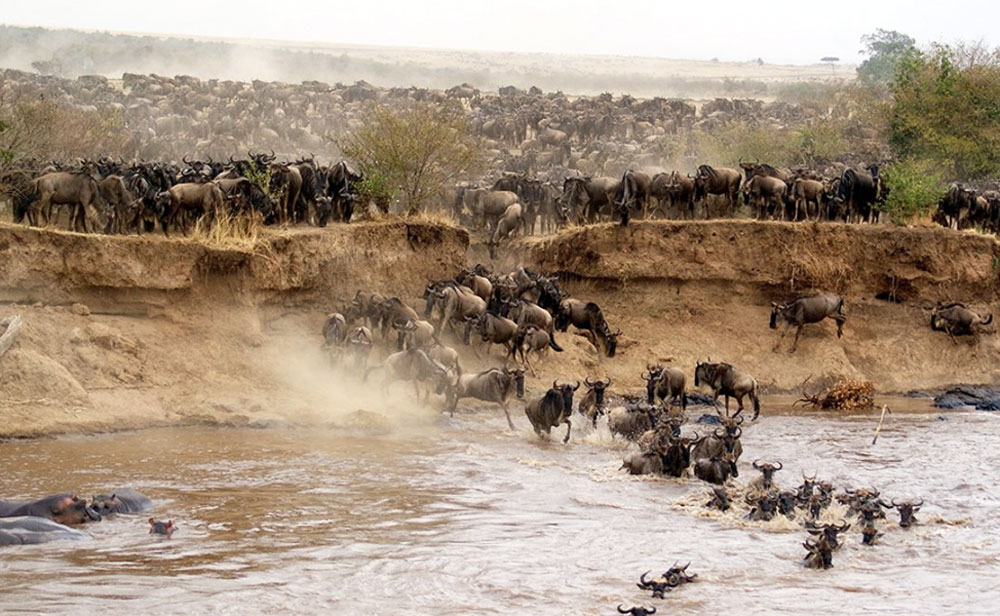
As we arrived at the Mara River, we could already hear the distant sounds of hooves pounding the ground. And then, as we got closer, we saw them – thousands upon thousands of wildebeest, zebras, and gazelles making their way toward the river.
The spectacle was truly breathtaking. The herds stretched as far as the eye could see, their horns and stripes creating a kaleidoscope of colors. The sound of their hooves was like thunder and the dust they kicked up filled the air with a sweet, earthy smell.
And then, as we watched, they began to cross the river. The water was swift and the current strong, but the herds pushed forward, driven by their instinct to survive. It was a heart-stopping moment as we watched them struggle against the force of the water and the threat of crocodiles lurking in the depths.
But eventually, many made it to the other side, wet and exhausted, but alive. And we felt a sense of awe and respect for these animals and their incredible journey.
Throughout the migration, we witnessed other incredible moments, like the animals grazing peacefully together, or the predators lurking in the shadows, waiting for their chance to strike. We were constantly amazed by the resilience and determination of these animals, and the stunning beauty of the Masai Mara landscape.
Witnessing the migration was a truly unforgettable experience. It filled us with a sense of wonder and respect for the natural world and reminded us of our place in it. If you have the chance to witness the wildebeest migration in Masai Mara, I highly recommend it – it’s an experience you’ll never forget.
Tips for Planning Your Trip to Masai Mara
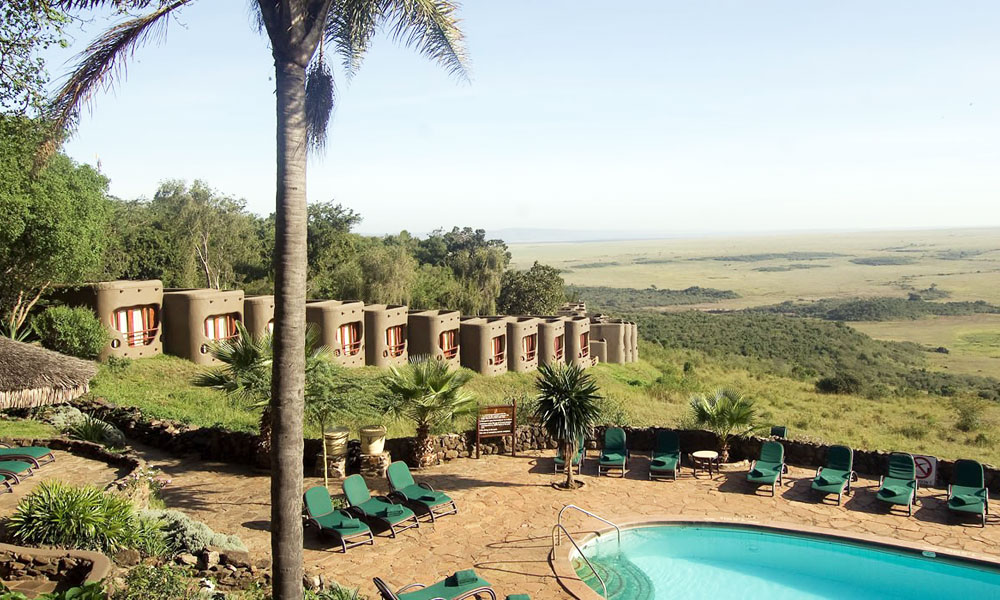
Are you ready to plan your own trip to witness the wildebeest migration in Masai Mara? Here are some tips to help you make the most of your experience.
Firstly, it’s important to understand the timing of the migration. The best time to witness the migration in Masai Mara is from July to October when the herds are crossing the Mara River. During this time, the animals are concentrated in the Masai Mara National Reserve and the neighboring private conservancies making it easier to witness the migration in action.
Next, consider your mode of transportation. If you’re planning to fly into Nairobi, you can take a connecting flight to one of the local airstrips in Masai Mara. Alternatively, you can take a road trip from Nairobi which takes about 6-8 hours. Once you arrive, you can book a tour with a reputable tour operator or explore the reserve on your own.
When it comes to accommodations, there are plenty of options to suit every budget. From luxury lodges to budget-friendly campsites, Masai Mara has it all. Some popular options include the Mara Serena Safari Lodge, Governors’ II Moran Camp, and the Mara Engai Wilderness Lodge. It’s important to book your accommodations well in advance to avoid disappointment as they can fill up quickly during peak migration season.
Before your trip, make sure to pack appropriately for the weather and activities. Masai Mara can get chilly in the early morning and evening so bring warm layers. Comfortable walking shoes and a hat are also recommended. In terms of vaccinations and travel documents, consult with your healthcare provider and travel agency to ensure that you have all the necessary vaccinations and visas for your trip.
With these tips in mind, you’re ready to plan your own adventure to witness the wildebeest migration in Masai Mara. It’s an experience you’ll never forget, filled with wonder, awe, and respect for the natural world.
Best Time to Witness The Wildebeest Migration
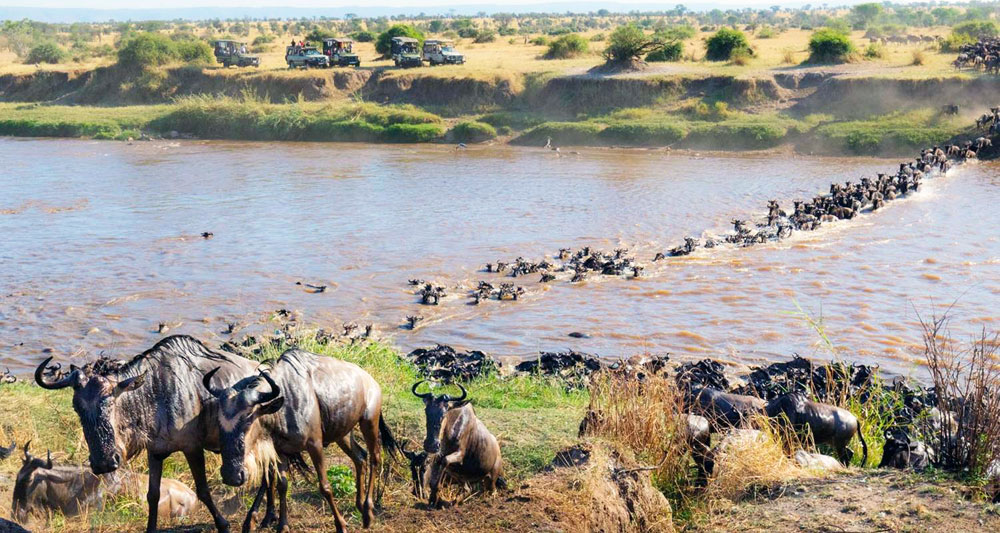
The best time to witness the wildebeest migration in Masai Mara is from July to October. During this period, the herds of wildebeest, zebras, and gazelles cross the Mara River, making it one of the most spectacular natural shows on earth.
In July, the herds begin their journey from the Serengeti National Park in Tanzania to Masai Mara in Kenya. By August, they start to cross the Mara River in large numbers, attracting predators such as crocodiles, lions, and leopards.
September and October are the peak months for the migration, with the herds crossing back and forth across the Mara River in search of fresh grazing grounds. This is the perfect time to witness the dramatic river crossings, where the wildebeest and other animals take the plunge into the water, facing potential danger from crocodiles and strong currents.
It’s important to note that the timing of the migration can vary from year to year, depending on rainfall patterns and other environmental factors. However, July to October is generally considered the best time to witness the migration in Masai Mara. It’s best to book your accommodations and tours well in advance as this is a popular time to visit and availability can be limited.
Conclusion
The wildebeest migration is a truly awe-inspiring event as hundreds of thousands of animals make their way across the grassy plains and crocodile-infested rivers of East Africa. Witnessing the migration is a once-in-a-lifetime experience that will stay with you forever from the sights and sounds of the herds to the adrenaline-pumping moments of river crossings.
If you’re planning to witness the migration, remember to plan ahead and book your accommodations and tours in advance. The best time to see the migration in Masai Mara is from July to October but keep in mind that the timing can vary from year to year.
In short, the wildebeest migration in Masai Mara is a natural wonder that should be on everyone’s bucket list. It’s an experience that will leave you in awe of the power and beauty of nature. So start planning your trip today and get ready to witness the greatest show on earth!

